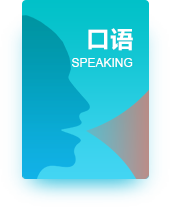在泰国西海岸,安达曼海群岛上的摩肯族孩子,具有超常的水下视觉能力。科学家对他们进行了跟踪研究,发现了其中的奥秘。

“When the tide came in, these kids started swimming. But not like I had seen before. They were more underwater than above water, they had their eyes wide open – they were like little dolphins(海豚).”
Deep in the island archipelagos (群岛)on the Andaman Sea, and along the west coast of Thailand live small tribes(部落) called the Moken people, also known as sea-nomads(流浪者). Their children spend much of their day in the sea, diving for food. They are uniquely adapted to this job – because they can see underwater. And it turns out that with a little practice, their unique vision might be accessible(可以使用的;可以获得的)to any young person.
In 1999, Anna Gislen at the University of Lund, in Sweden was investigating different aspects of vision, when a colleague suggested that she might be interested in studying the unique characteristics of the Moken tribe. “I’d been sitting in a dark lab for three months, so I thought, ‘yeah, why not go to Asia instead’,” says Gislen.
Gislen and her six-year old daughter travelled to Thailand and integrated(融入,综合) themselves within the Moken communities, who mostly lived on houses sat upon poles. When the tide came in, the Moken children splashed around in the water, diving down to pick up food that lay metres below what Gislen or her daughter could see. “They had their eyes wide open, fishing for clams, shells and sea cucumbers, with no problem at all,” she says.
Gislen set up an experiment to test just how good the children’s underwater vision really was. The kids were excited about joining in, says Gislen, “they thought it was just a fun game.”
The kids had to dive underwater and place their heads onto a panel. From there they could see a card displaying either vertical(垂直的)or horizontal(水平的)lines. Once they had stared at the card, they came back to the surface to report which direction the lines travelled. Each time they dived down, the lines would get thinner, making the task harder. It turned out that the Moken children were able to see twice as well as European children who performed the same experiment at a later date.
What was going on? To see clearly above land, you need to be able to refract(折射)light that enters the eye onto the retina(视网膜). The retina sits at the back of the eye and contains specialised cells, which convert(转变)the light signals into electrical signals that the brain interprets as images.
Light is refracted when it enters the human eye because the outer cornea(眼角膜) contains water, which makes it slightly denser than the air outside the eye. An internal lens refracts the light even further.
When the eye is immersed(沉浸)in water, which has about the same density as the cornea, we lose the refractive power of the cornea, which is why the image becomes severely blurred(使……模糊).(当眼睛浸入水中,水的浓度与眼角膜相当,因而失去眼角膜的折射功能,于是映像就变得非常模糊。)
Gislen figured that in order for the Moken children to see clearly underwater, they must have either picked up some adaption that fundamentally changed the way their eyes worked, or they had learned to use their eyes differently under water.(Gilsen推想,摩肯族孩子能在水下有清晰的视力,要么因为他们经过某种适应,从根本上改变了眼睛的工作机理,要么因为他们学会了如何在水下以不同的方式使用眼睛。)
She thought the first theory was unlikely, because a fundamental change to the eye would probably mean the kids wouldn’t be able to see well above water. A simple eye test proved this to be true – the Moken children could see just as well above water as European children of a similar age.
It had to be some kind of manipulation(操控)of the eye itself, thought Gislen. There are two ways in which you can theoretically improve your vision underwater. You can change the shape of the lens – which is called accommodation – or you can make the pupil(瞳孔) smaller, thereby increasing the depth of field.
Their pupil size was easy to measure – and revealed that they can constrict their pupils to the maximum known limit of human performance. But this alone couldn’t fully explain the degree to which their sight improved. This led Gislen to believe that accommodation of the lens was also involved.
“We had to make a mathematical calculation to work out how much the lens was accommodating in order for them to see as far as they could,” says Gislen. This showed that the children had to be able to accommodate to a far greater degree than you would expect to see underwater.
“Normally when you go underwater, everything is so blurry(模糊的)that the eye doesn’t even try to accommodate, it’s not a normal reflex,” says Gislen. “But the Moken children are able to do both – they can make their pupils smaller and change their lens shape. Seals and dolphins have a similar adaptation.”
Gislen was able to test a few Moken adults in the same way. They showed no unusual underwater vision or accommodation – perhaps explaining why the adults in the tribe caught most of their food by spear fishing above the surface. “When we age, our lenses become less flexible, so it makes sense that the adults lose the ability to accommodate underwater,” says Gislen.
(转第二页)
相关资料
相关推荐
-
思词汇在哪里学
2023-04-21![思词汇在哪里学]()
-
雅思阅读写作平时如何训练 高效提分有什么方法
2023-08-25![雅思阅读写作平时如何训练 高效提分有什么方法]()
-
10分钟刷一篇真题,利用好碎片时间也能提分
APP专享![10分钟刷一篇真题,利用好碎片时间也能提分]()
-
高三毕业雅思自学计划
2023-07-06![高三毕业雅思自学计划]()
-
雅思对话问题有哪些
2023-11-03![雅思对话问题有哪些]()
-
备考雅思单词方法有哪些
2023-06-16![备考雅思单词方法有哪些]()
-
雅思事件类文章有哪些题型
2023-08-30![雅思事件类文章有哪些题型]()
-
雅思备考技巧有哪些
2023-05-19![雅思备考技巧有哪些]()
-
雅思口语垂直型思维
2023-07-11![雅思口语垂直型思维]()
-
怎么自学雅思考试技巧
2023-11-10![怎么自学雅思考试技巧]()
-
雅思阅读听力做题方法和技巧
2023-10-30![雅思阅读听力做题方法和技巧]()
-
托福雅思单词速记方法是什么
2023-11-06![托福雅思单词速记方法是什么]()
-
雅思升职 学雅思可以升职加薪吗
2023-03-06![雅思升职 学雅思可以升职加薪吗]()
-
雅思词汇分类背诵技巧和方法
2023-10-31![雅思词汇分类背诵技巧和方法]()
-
托福雅思适合中高考吗
2023-05-26![托福雅思适合中高考吗]()
-
雅思读书话题有哪些
2023-11-24![雅思读书话题有哪些]()
-
雅思词汇要怎么学好
2023-11-01![雅思词汇要怎么学好]()
-
雅思听力阅读新题型是什么
2023-09-26![雅思听力阅读新题型是什么]()
-
雅思词汇如何快速记忆
2023-05-15![雅思词汇如何快速记忆]()
-
雅思短文答题技巧有哪些
2023-11-30![雅思短文答题技巧有哪些]()
-
雅思该如何自学 有什么方法
2023-11-13![雅思该如何自学 有什么方法]()


















